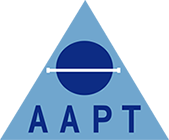News
Annual Educational Event 2022 poster competition
The theme for the 2022 Annual Educational Event poster competition is announced
Theme: Registration of the deceased and maintaining dignity
Content of the poster
- Make sure the Title and Mortuary’s name are prominent and eye-catching
- Tell a story: provide clear flow of information from introduction to conclusion
- Focus on your major findings - a common fault is to try to cover too much
- Few delegates are going to read everything on your poster, so get to the point
- Use graphs, tables, diagrams and images where appropriate. Use boxes to isolate and emphasise specific points.
- If you add an NHS logo, follow the guidelines provided by your trust
- Your Medical illustration department may be able to help you
Design suggestions
- Use all the space at your disposal, but do not cram in the content - white space is an important part of the layout, and good use of it can make a poster elegant and arresting.
- Use colour sparingly - limited use of a few colours is more striking than a 'rainbow' approach. Think about why you are using colour; it is especially useful for emphasis and differentiation.
- Avoid colour combinations that clash (e.g. red on blue) or cause problems for people with colour-blindness (e.g. red and green in proximity).
- Use white or muted colour background (e.g. pastel shades)
- The flow of information should be clear from the layout; if you have to use arrows to indicate the flow, the content could probably be arranged better.
- Clearly label diagrams/drawings and provide references to them in the text where necessary.
- The title text should be readable from 6 metres away - at least 48-point text. (Note that you are creating your poster in A3 format)
- The body text should be readable from 2 metres away - at least 24-point text
- Choose a clear font with large inner space (i.e. the space inside the loops of letters such as 'o', 'd', ‘p'). Good examples are Arial, Verdana, Georgia or Helvetica
Completed Entries
- Ensure the poster is NO larger than A3 size. A laminated final presentation is to be posted / mailed to: - Mrs Emma Romeling FAAPT. Mortuary Department, Wrightington, Wigan & Leigh NHS Foundation Trust, Royal Albert Edward Infirmary, Wigan Lane, Wigan, Lancashire, WN1 2NN
- Email a copy of your presentation & completed entry form to Debbie James no later than the 31st August 2022
- All entries will be displayed at the AAPT Annual Educational Event in Liverpool on 24th September 2022.
- They will be judged at the Annual Educational Event by all delegates and the winning presentation will be displayed on the AAPT website.
